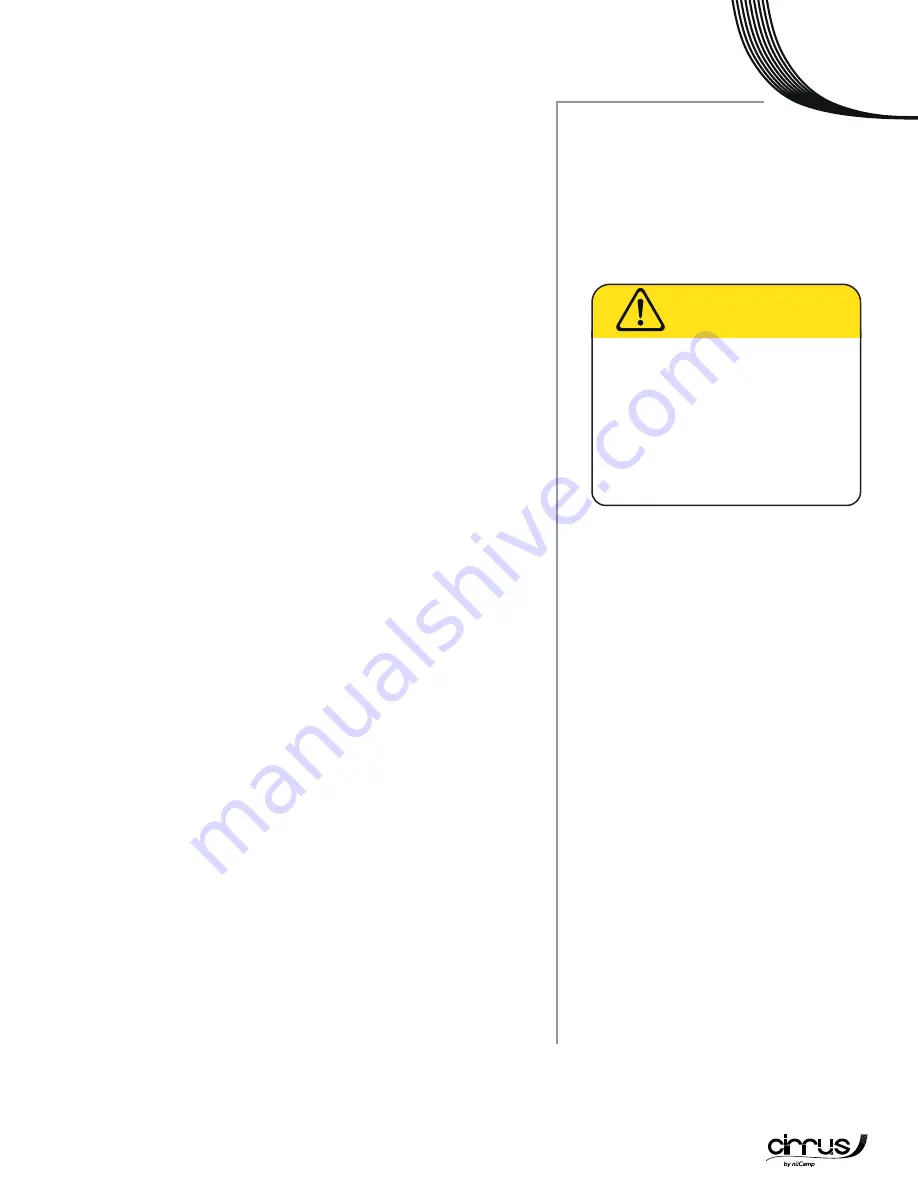
nucamprv.com • Truck Campers
51
Exterior Cleaning:
Road Debris.
The exterior of your camper is comprised of many different
materials including fiberglass, metal, rubber, plastics, aluminum, glass and
sealant. Road debris from traveling may accumulate on these materials and
result in corrosion, staining, or chemical spotting. Frequent washings of the
exterior will help protect from damage.
Salt Water.
Salt water is highly corrosive. When towing in snowy areas
in winter, especially where salt is used on roads, spray off the camper
after every trip to remove corrosive salt. When traveling by oceans, avoid
parking near salt water spray. The air near ocean shores is often laden with
salt water. Wash your camper more frequently to reduce corrosion and
wear.
Sunlight.
Avoid washing the camper in direct sunlight. A shaded area is the
best environment to wash your camper.
Water Drainage.
It may be helpful to jack up the front of the camper
slightly when spraying the camper so water trapped on the roof can drain
off the rear.
Frequency.
Wash your camper at least once a month. The roof should be
cleaned every other month or as debris accumulation demands.
Cleaning Agents.
A cleaning solution of mild liquid detergent and water
with a pH range 3 to 11 and free of strong solvents, alcohol or other
flammable liquid is ideal for most components. Check with the component
manufacturer or ask your dealer for recommendations on brands. If you are
unsure if a detergent will work, test it in a small inconspicuous area before
using in open areas.
Instructions.
Spray the camper thoroughly from top to bottom with water.
Then, using a sponge or car washing mitt, hand wash the camper from
top to bottom. Once done, rinse thoroughly and wipe dry with a soft linen
cloth. Never use abrasive cleaners.
Graphics.
Clean with the rest of the trailer. Test detergent solutions on
inconspicuous areas before using on large areas.
High Pressure Spray.
Use extreme caution when using any type of
pressure sprayer around attachments, doors, windows, and appliance
vents. Make sure to keep the washing nozzle about 16 inches or more away
from the RV and hold the nozzle at right angles when washing around
doors, vents and window areas. Be very careful when cleaning graphics.
Never direct the spray nozzle towards edges of graphics. DO NOT use
automatic car washes.
Waxing.
Wax the camper exterior twice a year. The use of automotive
waxes or cleaners/polishes that are for use on fiberglass or boats are
acceptable. Ask for recommendations from your dealer if you are unsure
of what to use. Exterior streaking, corrosion, staining, or chemical spotting
can be reduced with frequent waxing. Always wash and dry the camper
before waxing it.
There are some types of washing
equipment that can apply heat and high
pressure to your RV. Excessive heat can
cause distortion and excessive pressure
can possibly flood the RV’s interior.
Avoid using hot water with high pressure
washing. Damage will occur and your
warranty may be voided.
CAUTION




































